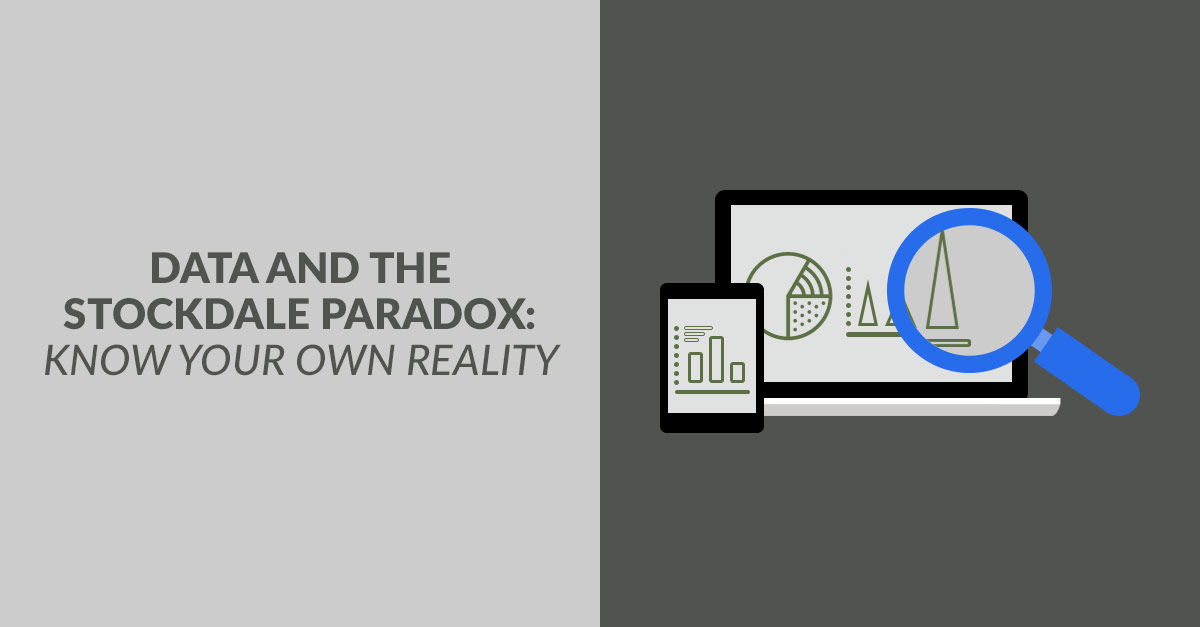
One of our Far Reads books, Good to Great, discusses the Stockdale paradox:
“You must never confuse faith that you will prevail in the end—which you can never afford to lose—with the discipline to confront the most brutal facts of your current reality, whatever they might be.”
Keep a positive attitude (#FRCV2), but always maintain awareness of reality. One way to maintain an objective view of reality is with data. More than likely, you already have quite a bit of data from your business’s day-to-day operations and won’t
have to look far to find it.
Where to Start
Analyzing your data sounds great in theory, but getting started may seem daunting. Luckily, it’s a matter of looking around at what already exists. Here are the steps to get you rolling:
Determine what you want to know. Let’s say you’ve identified inefficiencies in your business that need to be addressed. To evaluate the impact you want out of a solution, you’ll want to start with understanding where
you are now. In our example, this might mean you want to know average time spent on particular manual tasks, labor costs of employees performing those tasks, and how often those tasks are performed.
Gather the information you have. Chances are, your organization is already using several software systems, each one rich with data. These are a few of the common business software categories you might be using:
- Customer relationship management (CRM)
- Accounting
- Project management
- Billing
- ERP
If the information you need is in one (or more) of your systems and you can’t get it out (for example, with an easy export process or even built-in analysis capabilities), evaluate the value the system provides and look at alternatives. Does it
really meet your needs? Companies with continual access to and strategic use of data tend to make better decisions—and do so faster—than companies without access.
Analyze what you found. You don’t need a statistics degree to do some analysis on your data. Check the basics: trends, averages, percentages, outliers, changes over time, and anything that appears different than you expected. We’ve
found it’s best to do this step with another person to help eliminate attribution flaws and misinterpretation. Ultimately, the purpose of this analysis is to identify and prioritize specific areas in need of attention, and to map out the results
you’re looking for.
Try something. Now that you have insights into your data and a prioritized list of what needs attention, run experiments. Try changing a single element of your process and see if/how it affects the data. Keep running experiments until
you see good progress toward the results you’re looking for and make those changes part of your new processes.
One Caveat
Paralysis by analysis is a real thing in situations like this. To keep yourself out of a deep dark hole, draw a line where it makes sense to switch from analyzing to doing. Set a time box that allows you to capture and analyze the data, but at some point,
get started. Try something; use what you learned from your data to set priorities and start implementing.
Discovering and accepting your current reality through data will help you strategically move forward both optimistically
and effectively.